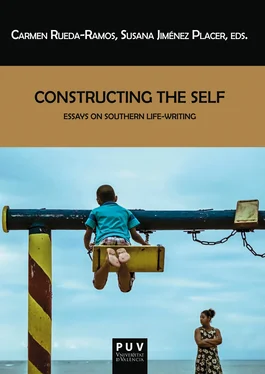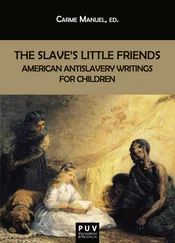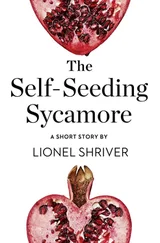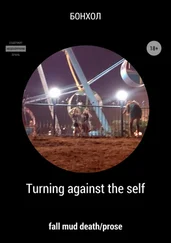AAVV - Constructing the Self
Здесь есть возможность читать онлайн «AAVV - Constructing the Self» — ознакомительный отрывок электронной книги совершенно бесплатно, а после прочтения отрывка купить полную версию. В некоторых случаях можно слушать аудио, скачать через торрент в формате fb2 и присутствует краткое содержание. Жанр: unrecognised, на английском языке. Описание произведения, (предисловие) а так же отзывы посетителей доступны на портале библиотеки ЛибКат.
- Название:Constructing the Self
- Автор:
- Жанр:
- Год:неизвестен
- ISBN:нет данных
- Рейтинг книги:3 / 5. Голосов: 1
-
Избранное:Добавить в избранное
- Отзывы:
-
Ваша оценка:
- 60
- 1
- 2
- 3
- 4
- 5
Constructing the Self: краткое содержание, описание и аннотация
Предлагаем к чтению аннотацию, описание, краткое содержание или предисловие (зависит от того, что написал сам автор книги «Constructing the Self»). Если вы не нашли необходимую информацию о книге — напишите в комментариях, мы постараемся отыскать её.
Constructing the Self — читать онлайн ознакомительный отрывок
Ниже представлен текст книги, разбитый по страницам. Система сохранения места последней прочитанной страницы, позволяет с удобством читать онлайн бесплатно книгу «Constructing the Self», без необходимости каждый раз заново искать на чём Вы остановились. Поставьте закладку, и сможете в любой момент перейти на страницу, на которой закончили чтение.
Интервал:
Закладка:
In this address I said that the whole future of the Negro rested largely upon the question as to whether or not he should make himself, through his skill, intelligence, and character, of such undeniable value to the community in which he lived that the community could not dispense with his presence. I said that any individual who learned to do something better than anybody else—learned to do a common thing in an uncommon manner—had solved his problem, regardless of the colour of his skin, and that in proportion as the Negro learned to produce what other people wanted and must have, in the same proportion would he be respected. (202)
It is precisely this social gospel—of learning to do a common thing in an uncommon manner in order to integrate oneself into the community—that is the foundation of thinking behind Washington’s educational system at Tuskegee, what was known as “industrial education.” “Industrial” as Washington used it did not have the same associations that it has now (large factories, heavy manufacturing, assembly lines); for Washington it meant being industrious, and specifically being industrious in the training for specific tradecraft, such as masonry, carpentry, farming, and husbandry. When talking about industrial education and social change, with students evolving into skilled workers who vitalize themselves and their communities, Washington often, as he does in the following passage from Working with the Hands , used the metaphor of construction, of laying down firm foundations upon which soaring edifices could be built:
One farm bought, one house built, one home neatly kept, one man the largest tax-payer and depositor in the local bank, one school or church maintained, one factory running successfully, one truck-garden profitably cultivated, one patient cured by a Negro doctor, one sermon well preached, one office well filled, one life cleanly lived—these will tell more in our favour than all the abstract eloquence that can be summoned up to plead our cause. Our pathway must be up through the soil, up through swamps, up through forests, up through the streams and rocks; up through commerce, education and religion!
In my opinion we cannot begin at the top to build a race, any more than we can begin at the top to build a house. If we try to do this, we shall reap in the end the fruits of our folly. (29-30)
As Washington’s words suggest here, his ultimate goal with his educational system was to “build a race,” to put together a version of blackness that would challenge, and in time dismantle, the prevailing version of whiteness that was being constructed in the post-Civil War white South. In Making Whiteness: The Culture of Segregation in the South, 1890-1940 , Grace Elizabeth Hale examines the means by which the complex dynamics of racial segregation were fabricated, cementing in place a social system founded upon absolute and essential racial difference. While Emancipation might have seemed to open up for southern blacks a world of boundless promise, the system of segregation instead restricted blacks within a tightly contained world, limiting opportunities for self-improvement and restricting mobility, both literal and social. If the southern system sought to obscure and deny the dangerous middle ground of racial hybridity, which stood as a challenge to racial essentialism and the visibility of racial categories, so too did the system seek to keep another middle ground—the middle class—entirely white. “Racial essentialism, the conception of sets of personal characteristics as biological determined racial identities,” Hale writes, “grew in popularity among whites in tandem with the rise of the new black middle class and its increasing visibility” (21).
Hale for the most part dismisses any serious challenge to the segregated system by Washington, arguing that despite his efforts to build a black middle class and “his staggering accomplishments [that] rebuked whites’ illusions of absolute racial difference and black inferiority[,] . . . his accommodationist stance, moralism, and program of industrial education offered no resistance to the expansion of segregation” (25). Not all whites from the period agreed with Hale’s assessment. That many whites in fact believed Tuskegee and Washington’s program of industrial education posed a serious threat to the southern system, in spite of Washington’s public disavowals, can perhaps best be seen in an article by Thomas Dixon, “Booker T. Washington and the Negro: Some Dangerous Aspects of the Work of Tuskegee,” which appeared in the Saturday Evening Post in 1905. Dixon here savagely attacks Washington’s leadership at Tuskegee because he was training blacks “ all to be masters of men, to be independent, to own and operate their own industries, plant their own fields, buy and sell their own goods, and in every shape and form destroy the last vestige of dependence on the white man for anything” (qtd. in Norrell 71). To the question of what would southern white man do if the Negro threatened his livelihood, Dixon gives the simple answer: “Kill him!” (qtd. in Norrell 71). Dixon had a few years before he voiced this conclusion in The Leopard Spots: A Romance of the White Man’s Burden , when one of the novel’s heroes (a preacher, no less) makes this observation: “Industrial training gives power. If the Negro ever becomes a serious competitor of the white labourer in the industries of the South, the white man will kill him” (335).
But Washington’s educational and social theories, I want to suggest, were even more subversive than Hale or Dixon ever imagined, particularly as seen in his frequent emphasis on hands, handcrafts, and making. While this subversiveness is not always immediately obvious, its disruptive power is almost always there lurking, visible once one begins to look for it. Take, for example, one of Washington’s most infamous comments, from his speech at the Atlanta Exposition (which is printed in its entirety in Up From Slavery ): “In all things that are purely social we can be as separate as the fingers, yet one as the hand in all things essential to mutual progress” (221-222). At first glance, this comment seems entirely straightforward: blacks and whites can work together to improve economic conditions in the South, while remaining entirely separate socially. White leaders from across the nation rallied behind Washington’s declaration. But if we return to Hale’s comment about the white South’s construction of whiteness and its fear of hybridity, Washington’s image of a single hand with black and white fingers invokes precisely that hybridity, raising a number of questions that unsettle the foundations of white southern separatism. This is David Leverenz’s point, when he observes that Washington’s image of the hand “subliminally subverts” the social separatism that it seems to stabilize, since any attempt to visualize the hand—how is the hand both black and white?—suggests racial amalgamation. “Is the hand striped, like a zebra?” Leverenz asks, offering ways to visualize it. “Blended, like a mulatto? Which fingers are black, and which are white? How many of each are there? What happens at the base of the black finger or fingers, when the black moves into the palm?” (165). Adding to the disruptive potential of Washington’s image of the hand is the foreboding challenge that he immediately after delivers to southern whites: “Nearly sixteen millions of hands will aid you in pulling the load upward, or they will pull against you the load downward” (222). How comforting can all this be to white supremacists? And what happens when those hands are made into fists?
Washington’s subversive challenge to southern separatism, particularly with regard to education and handwork, can be seen throughout all his autobiographies, but in none more clearly than Working with the Hands , which appeared in 1904 and was marketed as a sequel to Up From Slavery . Working with the Hands covers some of same ground as Up From Slavery , but it focuses much more closely on labor and education. No doubt it was written in part as a response to the ferocious attacks from W. E. B. Du Bois and other black leaders that were directed at Washington’s program of industrial education at Tuskegee. To Du Bois and others, there was nothing “higher” in the higher education that black students were receiving at Tuskegee. In his essay “Of Mr. Booker T. Washington and Others,” which appeared in The Souls of Black Folk , Du Bois wrote that education at Tuskegee was “becoming a gospel of Work and Money to such an extent as apparently almost completely to overshadow the higher aims of life” (39). He characterized it at one point as “industrial slavery and civic death” (42). In another essay from Souls , “Of the Training of Black Men,” written with Washington clearly in mind, Du Bois argued that industrial education was merely a temporary fix to an economic problem, a program for teaching trades and little else, and one that in ignoring the cultivation of higher pursuits of the mind condemned students to stunted lives of toil.
Читать дальшеИнтервал:
Закладка:
Похожие книги на «Constructing the Self»
Представляем Вашему вниманию похожие книги на «Constructing the Self» списком для выбора. Мы отобрали схожую по названию и смыслу литературу в надежде предоставить читателям больше вариантов отыскать новые, интересные, ещё непрочитанные произведения.
Обсуждение, отзывы о книге «Constructing the Self» и просто собственные мнения читателей. Оставьте ваши комментарии, напишите, что Вы думаете о произведении, его смысле или главных героях. Укажите что конкретно понравилось, а что нет, и почему Вы так считаете.












